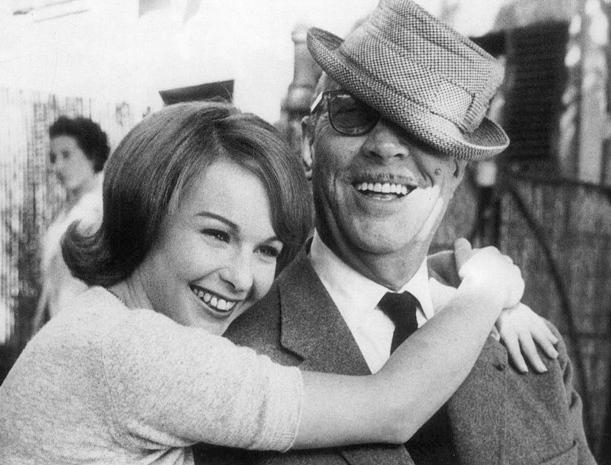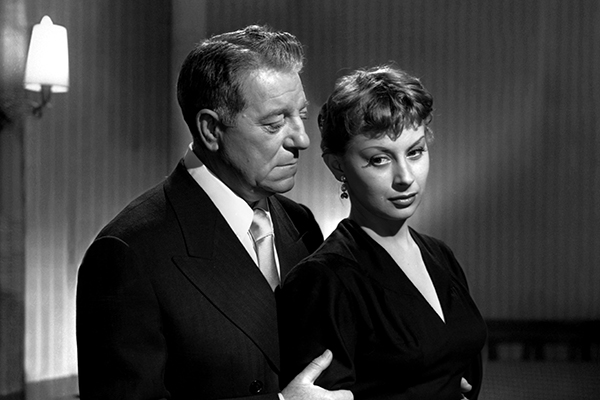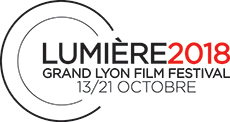The Decoin versatility
A filmmaker to rediscover
POSTED ON OCTOBER 11, 2018
Filmmaker Henri Decoin undoubtedly deserves to be rediscovered. From tense or psychological thrillers to historical films, dramas, musicals or romantic comedies, his filmography is a festival of genres that has produced real successes. Lumière 2018 salutes his multi-tiered universe with a proper retrospective.
Swim champion of France, WWI aviator, novelist, sports journalist, screenwriter (since 1925), and finally filmmaker, Decoin is inimitable. His work is full of pleasant movies, always well-constructed, and moreover, essential. Here is a short guide to help discover this great director of French cinema, whose career covers three decades and counts fifty films.

Starting out in his early forties as a director in 1931, with his short film “A bas les hommes,” Decoin shoots a thrilling movie about boxing in 1934, “Toboggan,” starring the former world champion of boxing, Georges Carpentier in the title role. The director describes the violent struggle of a has-been, at times filming the story in a very affecting, semi-documentary style. The following year, Decoin meets Danielle Darrieux, whom he marries and who will become his muse for a dozen films, even after their divorce. From their shared filmography, we will remember “Beating Heart” (1940), a comedy on par with major American hits of the genre. Darrieux plays an orphan on the run, forced to take pickpocket lessons, who later will have to prove the cheating ways of the wife of the man who caught her in the act. With biting dialogue and a rigorous pace, the film also offers a good opportunity to examine the unforgettable supporting roles played by Julien Carette, Saturnin Fabre and Jean Tissier… Subsequently, they reunite for the “The Case of Poisons” (1955), where Darrieux slips into the skin of Madame de Montespan. The film flirts with the horror genre, borne of its frightening atmosphere (with a disturbing abbot played by Paul Meurisse), foreshadowing the arrival of the British Hammer films, and their incredible colors (Decoin’s film is released nearly 18 months ahead of Fisher’s “The Curse of Frankenstein”). Not too shabby for a film deemed second-rate in his filmography.
In “The Truth About Our Marriage” (1952), Decoin recasts Darrieux and directs Jean Gabin for the first time. Regarded as one of the finest adaptations of a Simenon novel, Decoin delivers a dark drama (even more so than the original book) about a couple whose marriage is in distress. Gabin plays a wealthy, selfish industrialist and a man of power, who finds himself on a hospital bed, poisoned by his wife. In love at first, she gradually becomes indifferent to their relationship. Through numerous flashbacks, the director weaves a bleak story with the intense energy between Darrieux and Gabin, the latter searching for redemption (a far cry from the commanding roles he would play later). The Simenon-Decoin duo is a success. Let us recall in passing that previously there had been “The London Man” (1943, a bit dated, to be honest) and the noteworthy “Strangers in the House” (1942). Written by Henri-Georges Clouzot, the film tells the story of a lawyer abandoned by his wife, who falls into alcoholism. He returns to the bar to defend a friend of his daughter’s, wrongly accused of murder. Produced by the Continental in 1942, the film is a true plea for a neglected generation of youth and a condemnation of the indifference of so-called responsible parents who live by sound morals of a provincial bourgeoisie. A risky rocking-of-the-boat for the time, played by a masterful Raimu.

Decoin also lends his prestigious cachet to the French crime flick, “Razzia sur la chnouf” (1955), based on a work by Auguste Le Breton. With this authentic dive into the drug and mafia scene, Henri Decoin works again with Gabin (alias le Nantais), at the top of his game, alongside Lino Ventura, Dalio and many other guys, filmed with obvious pleasure. The director likes actors, often casting them in roles against type, like Louis Jouvet, victim of a rumor about a possible liaison with his protégée in “Monelle” (1948, superb script by Henri Jeanson), working with him again in the fascinating “Between Eleven and Midnight,” where a police inspector takes advantage of his striking resemblance to a thug found dead to further the investigation. A similar case occurs for Michel Simon in “Not Guilty” (1947), where he plays a drunkard doctor who becomes an accidental murderer, but who develops a taste for it, even considering himself a criminal genius. Decoin made use of this Jekyll and Hyde character to take a dig at deep France of the time.
The director does not stop there with Michel Simon, choosing him once more to star with Gaby Morlay in “Les amants de St Jean,” a surprising film, where comedy and tragedy rub shoulders, while a young couple discovers that, after all, they do not love each other in the context of social problems. A work to discover urgently, especially since it is rather rare. We will not forget to mention “Un soir au music-hall” (1956), a successful French musical (not a common feat) with Zizi Jeanmaire and Eddie Constantine (who sings “Paris-bohême”), and “The Face of the Cat”/ “The Cat” (1958), where Francoise Arnoul (one of his favorite actresses) plays an attractive but formidable spy at the head of a network of the Resistance… This filmmaker’s universe is indeed vast. Never settling on a single genre, perpetually renewing himself, Henri Decoin remains elusive - and that's just fine with us.
The Henri Decoin retrospective of the Lumière festival: click here.



